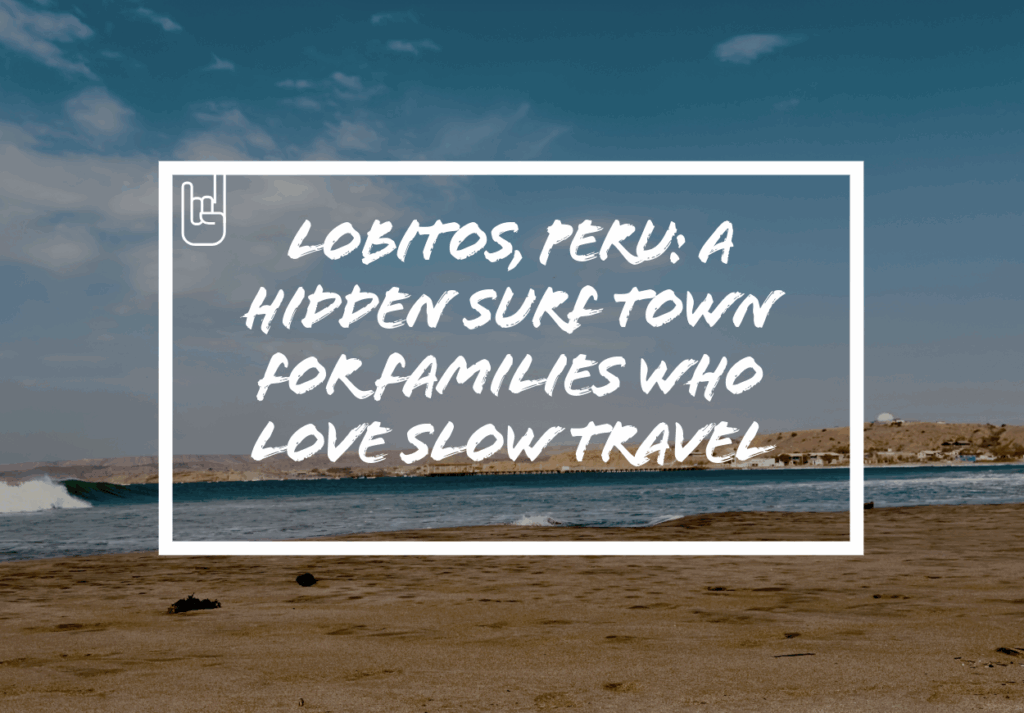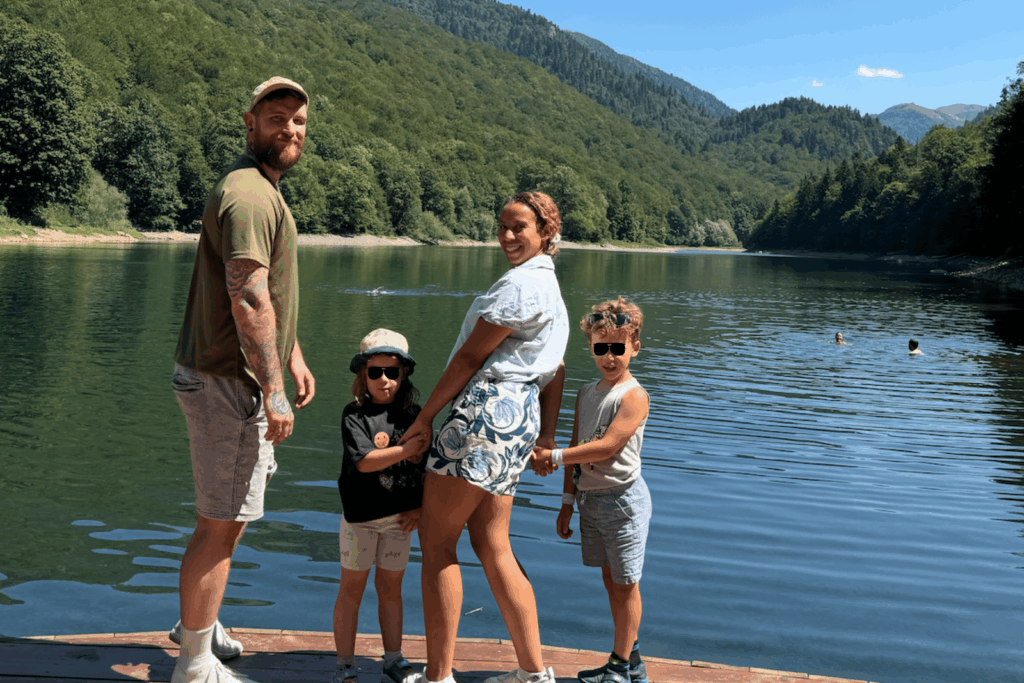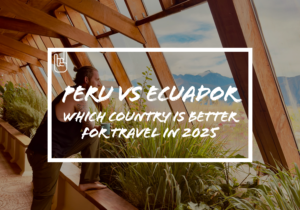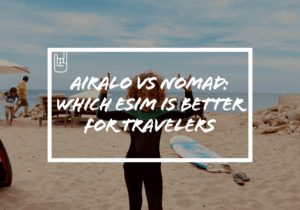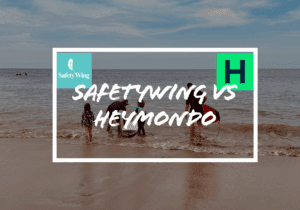Lobitos, Peru: A Hidden Surf Town for Families Who Love Slow Travel
After the bustle of Máncora, we headed an hour down the coast to Lobitos, a sun-bleached surf town where time slows, waves roll steady, and even our kids found a rhythm that matched the tide. It’s rough around the edges, but that’s exactly its charm, the kind of place that reminds you why slow travel is worth it.
Updated: November 2025
Visited: Lobitos, Peru (Oct 2025)
Family travel, long-term route through South America
Lobitos, Peru, Where Time Slows Down
After weeks of buses, beach towns, and juggling travel plans with snacks and schoolwork, we found Lobitos, a windswept surf town that feels half ghost town, half paradise.
It sits just over an hour from Máncora, but it feels like a different world entirely. Dusty roads open up to long, glassy waves. Rusted oil rigs dot the horizon. Surfboards lean against sun-bleached walls, and hammocks swing in the same salty breeze that never seems to stop.
For a few slow, quiet days, we swapped schedules for sunsets and found the version of Peru we didn’t know we needed, still raw, still simple, and just the right kind of sleepy.
The Lobitos Essentials
Surf & Chill / Lobitos is where you come not to rush. The surf breaks here are legendary but mellow enough for confident beginners. If you’re new to it, check out a family surf lesson with great reviews, everything’s provided, and it’s a fun, easy way to join the rhythm of the town.
🚗 Getting Around / There’s no Uber here and taxis are scarce, so renting a car through Discover Cars is the easiest way to get in and out. It also gives you freedom to explore nearby spots like El Ñuro (for sea turtles) or Los Órganos.
🏨 Where to Stay / Accommodation is limited but atmospheric, eco-lodges, surf hostels, and quiet beach cabins. Look for guesthouses with solar power and good Wi-Fi, or browse Airbnb for off-grid casitas if you’re staying longer.
📶 Data / Signal can be patchy, so buy an Airalo eSIM before you travel — it keeps maps and translations working even when local Wi-Fi drops out.
🛡️ Insurance / Remote areas mean limited clinics. Lightweight family travel insurance that covers sports and surf days is worth every penny.
💡 Family Tip / Stock up in Talara or Máncora before heading in — Lobitos has charm, waves, and sunsets, but not much in the way of supermarkets or ATMs. Bring snacks, sunblock, and cash; leave the hurry behind.
Getting to Lobitos (and Why We Took a Taxi)
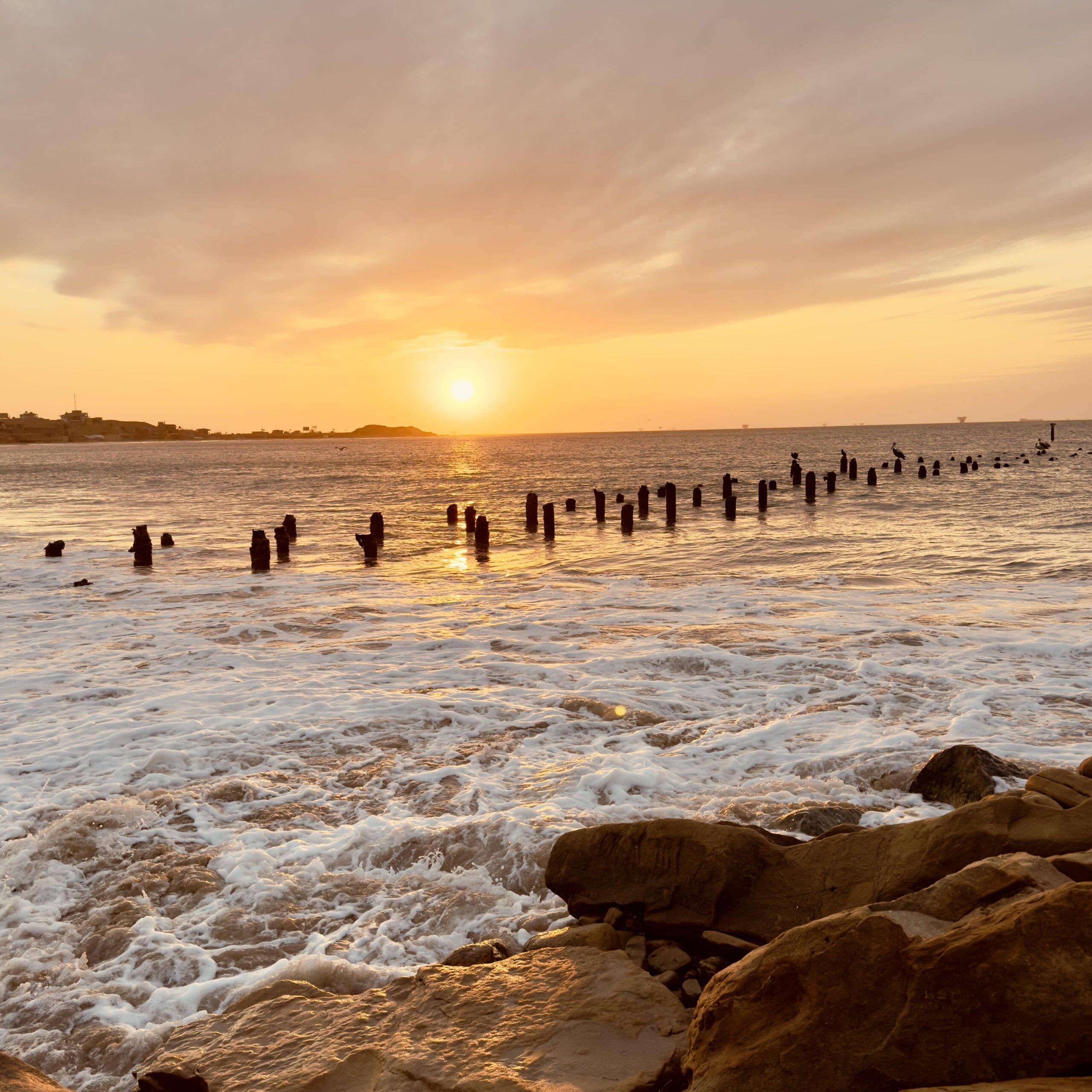
Lobitos isn’t the kind of place you just stumble upon, which is probably why it still feels so untouched. It sits about 1 hour and 20 minutes south of Máncora, tucked quietly along Peru’s northern coastline. You can get there by collectivo or private taxi, but unless you’re a fan of long waits and guessing which bus stop is yours, the taxi is the easier option.
We found ours the modern way, through Google Maps and WhatsApp. A quick message (thank you, Google Translate) got us a quote of 150 soles, and after leaving it overnight, the driver knocked it down to 120 soles. Was it still overpriced? Absolutely. But with two kids, backpacks, and a vague sense of where we were going, it felt worth every sol.
The drive itself was smooth, with a few dusty stretches and wide-open desert views. At the entrance to Lobitos, there’s a security checkpoint, which might seem intimidating at first, but it’s more routine than anything, they’ll just ask the reason for your visit and wave you through.
If you’re wondering about safety, we found Lobitos to be completely safe, especially with the gated access in and out. Once you’re inside, it’s all surf camps, friendly locals, and the sound of the ocean, not much else, and that’s exactly the charm.
First Impressions: A Surf Town That’s Still Waking Up
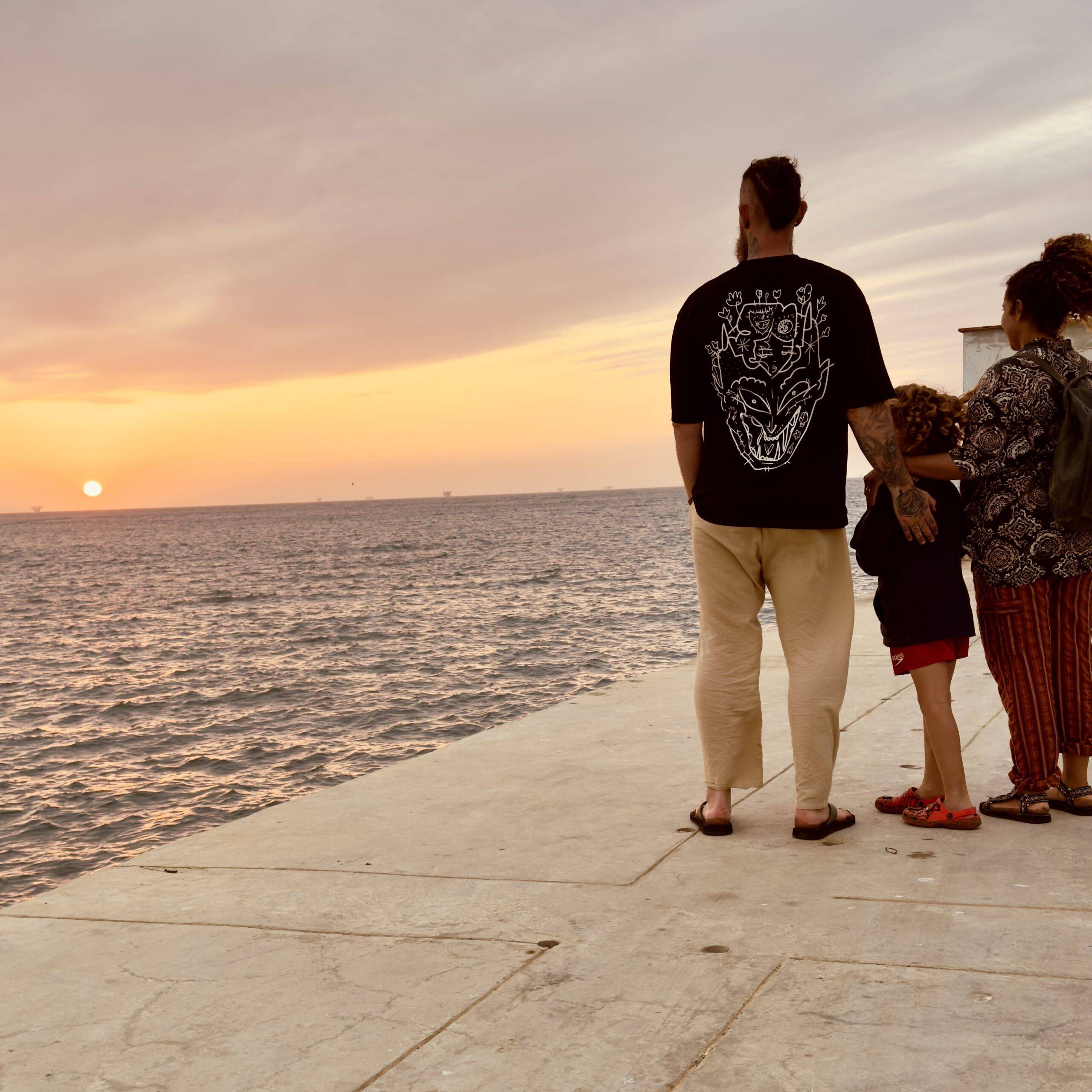
Lobitos feels like a place caught between two eras. You’ll see old town buildings crumbling into the sand, surfboards stacked against cracked concrete walls, and bright new cafés popping up with smoothie bowls and Wi-Fi that only works when the wind behaves.
It’s quiet, really quiet. You can walk ten minutes and not see another person, apart from a few locals fixing fishing nets or surfers waxing boards in front of low-key hostels. There’s no main square or tourist strip here, just a stretch of coastline shaped by waves and weather.
But that’s what makes it different. After the busier, beach-club vibe of Máncora, Lobitos feels like pressing pause. The air is cooler, the pace slower, and the sense of space bigger.
It’s not polished, some buildings are still being rebuilt after the tsunami a while back, but there’s a charm in that roughness. It’s a surf town that hasn’t been fully discovered, though you can feel it’s heading that way. There’s talk of new developments and more surf schools, mostly run by expats from the U.S. and Australia. Prices are creeping up, but for now, it’s still raw enough to feel real.
If you’re coming as a family, expect simplicity over structure. You’ll find enough comfort to feel safe, enough beauty to stay longer than planned, and just enough Wi-Fi to remind people you’re alive before disappearing again.
Where We Stayed: Wayra Surf House
We spent three nights at Wayra Surf House, which calls itself a hotel but feels much more like a relaxed surf hostel. The kind where time stretches, hammocks sway, and everyone seems to know when the next good wave will hit.
It’s set right by the beach, literally steps from the sand, so mornings started with the sound of the sea and ended with golden light spilling through our window. The rooms are simple but clean, each with a small terrace and hammock (our kids claimed those immediately).
There’s a shared kitchenette with a microwave, fridge, and kettle, but don’t expect a full cooking setup. We mostly used it for snacks, coffee, and storing fruit and water. Hot water runs from around 5 p.m., which sounds odd until you realise the afternoons are warm enough that you’ll barely notice.
The owner, Ricardo, couldn’t have been friendlier, laid-back, helpful, and quick to offer surf tips or local advice. The vibe here is exactly what Lobitos promises: slow, sandy, and centred around surf.
If you’re after luxury, this isn’t it. But if you want to unplug, unwind, and wake up next to the Pacific, Wayra hits that sweet spot between rustic and relaxing.
For families, it worked surprisingly well. The space is open and safe, the beach is right in front, and the hammocks make for perfect downtime.
💡 Tip: Bring some basic groceries from Máncora before you arrive, Lobitos has limited shops, and prices are higher here due to lack of competition.
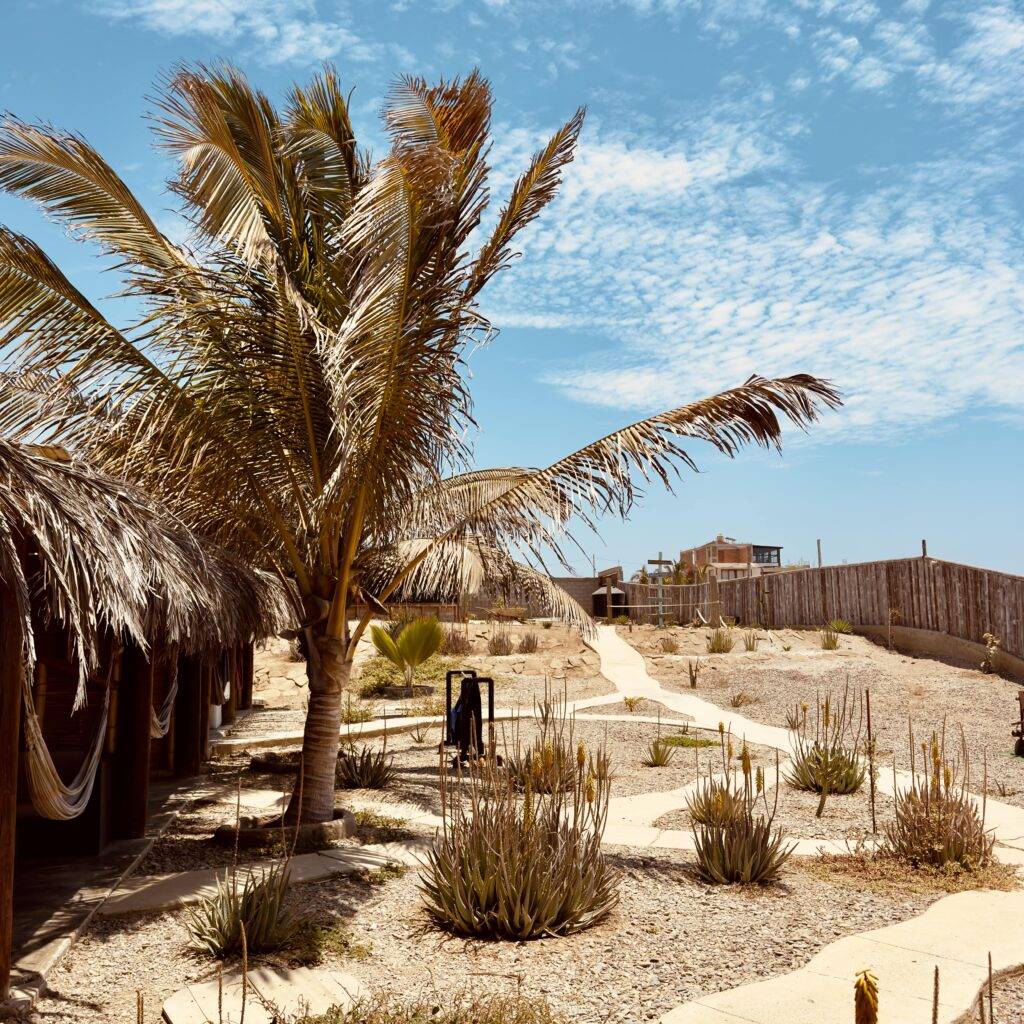
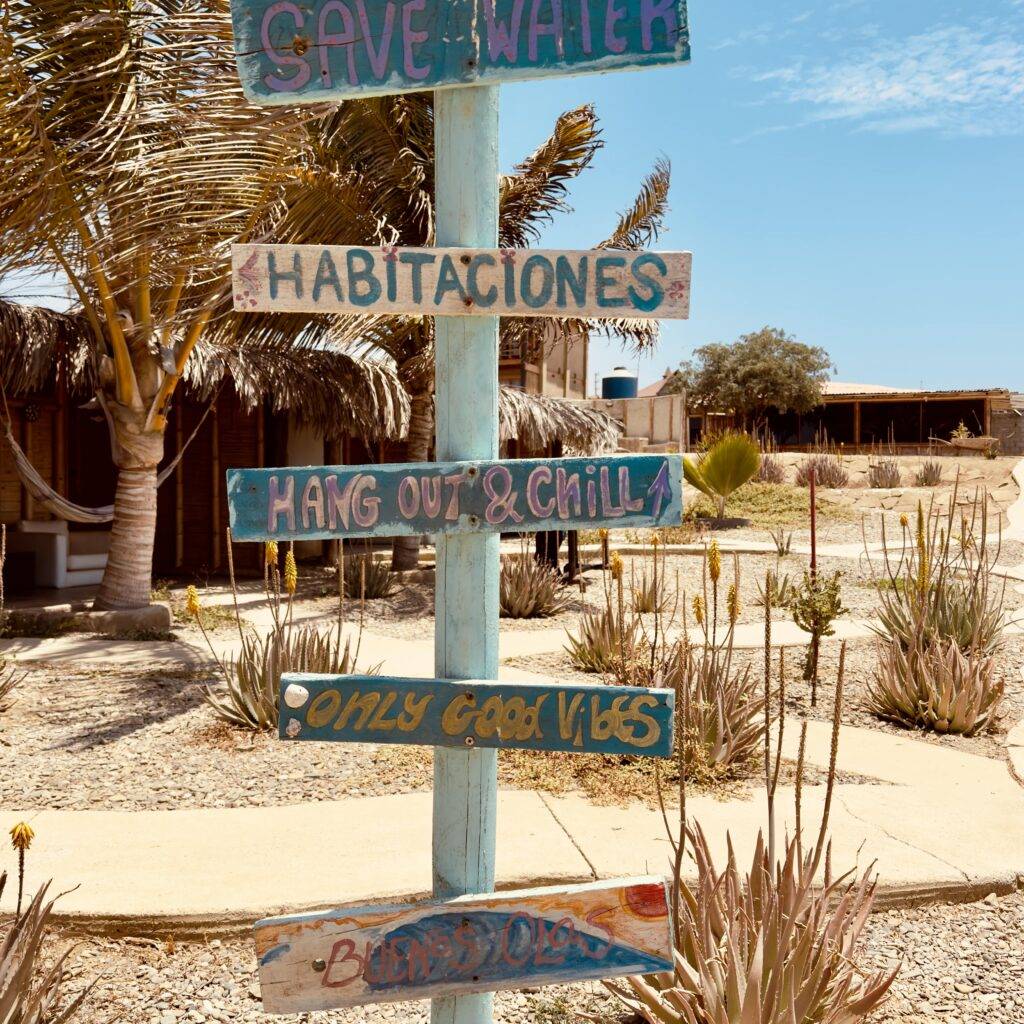
Where to Eat in Lobitos (and What’s Actually Worth It)
If there’s one thing to know about Lobitos, it’s that everything comes at surf-town prices, not outrageous, but definitely higher than you’d expect for a place this small. With only a handful of restaurants and one mini-market, competition isn’t really a thing here.
That said, we found a few gems worth your soles.
Juguería Ropostería & El Ancla – Best Value in Town
These two spots quickly became our go-tos.
At El Ancla, we ordered chaufa for 20 soles and chips for 10 soles, and the portions were huge. Good, hearty, unfussy food that actually fills you up after a surf session or long beach walk.
Juguería Ropostería served similar local plates with fresh juices and friendly prices, proof that good food doesn’t have to come with an expat markup.
AKUA – The “Nice Night Out” Option
When we wanted a meal that felt like more of a sit-down, AKUA was the clear choice. The menu was pricier, but the atmosphere was warm, the food solid, and the sunset view unbeatable.
La Onza Café – Great Coffee, American Prices
We couldn’t resist checking out La Onza, the local surf café with glowing reviews and all the oat milk options you could dream of. The coffee was genuinely great, probably the best in town, but with U.S.-style prices, it’s more of an occasional treat than a daily habit.
Tip: Stock up in Máncora before you head here, snacks, fruit, and basics cost about double in Lobitos. The one small supermarket is fine for essentials, but selection is limited.
All in all, eating in Lobitos feels like a trade-off: fewer options, higher prices, but an unbeatable view with every meal.
Also Read: Peru vs Ecuador: Which Country Is Better For Travel in 2025
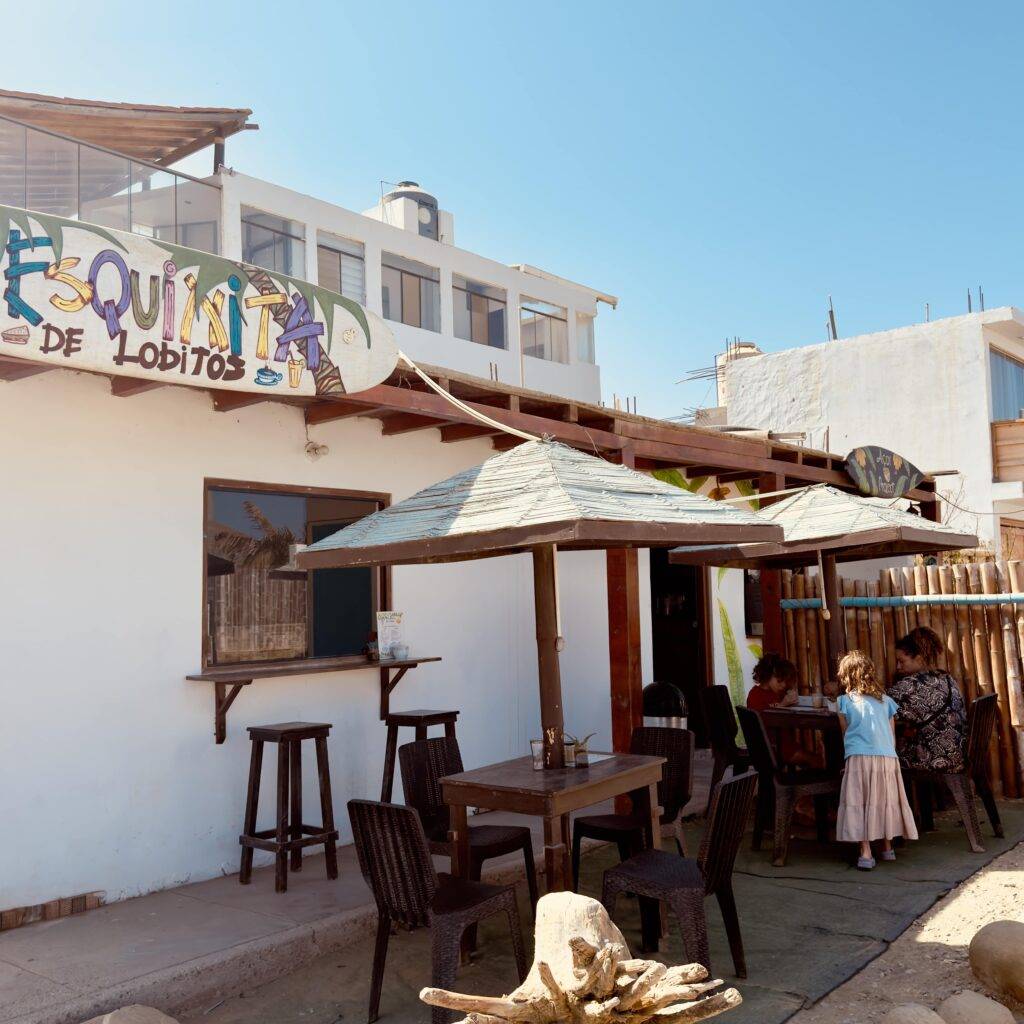
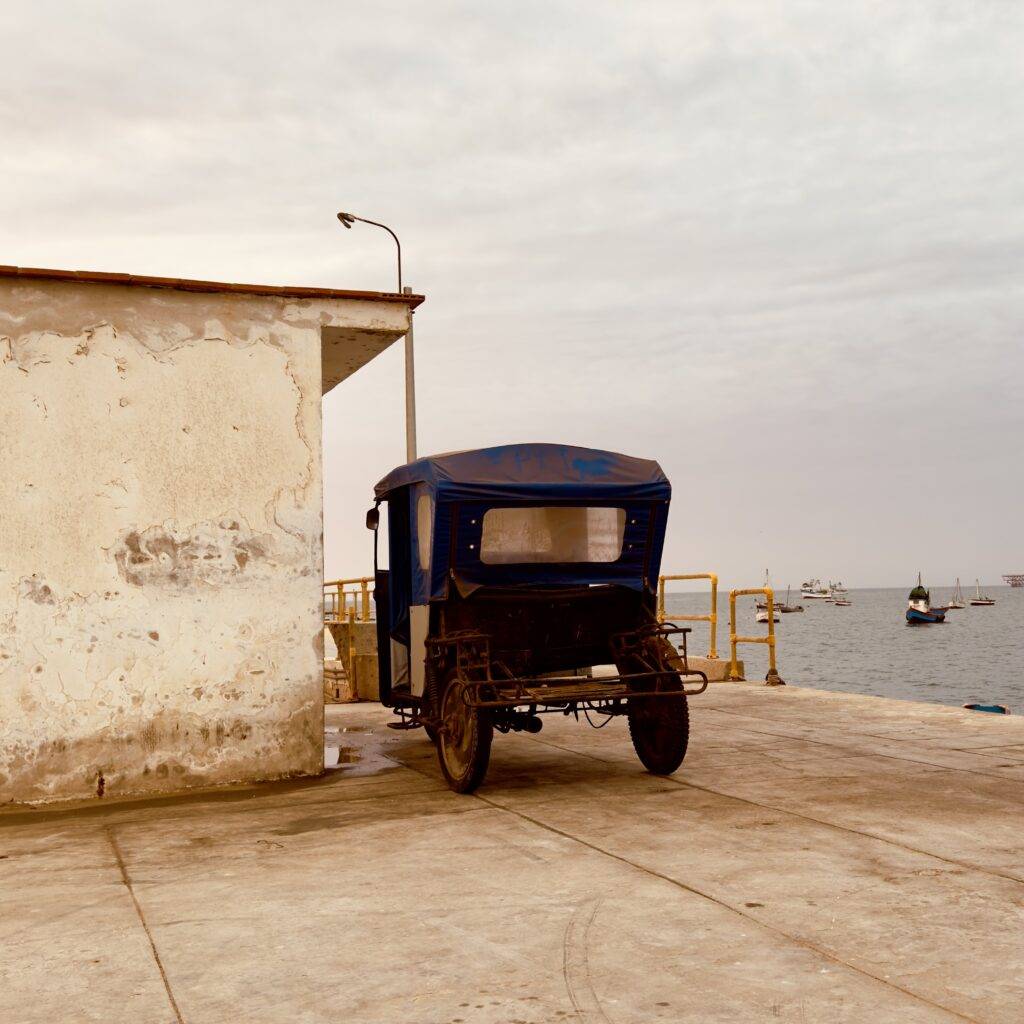
Surfing in Lobitos (Lessons, Waves & What to Expect)
Lobitos is first and foremost a surf town, everything here revolves around the tide. Conversations at cafés start with the forecast, and locals can tell what kind of day it’ll be just by looking at the horizon.
The waves here are consistent and clean, with long left-hand breaks that roll in gently enough for beginners but fast enough to keep more experienced surfers happy. It’s one of the few spots in northern Peru that manages to suit both sides of the board.
We booked a family lesson through the Surf School, which also has a small skate park next to it, a bonus if your kids still have energy after the beach (ours did). The instructors were friendly, patient, and genuinely good at getting everyone standing up on the board by the end of the session.
Our lesson cost 200 soles for all four of us, including board rental and rash guards, easily one of the best value surf experiences we’ve had. The beach itself, near the main rocks, is ideal for beginners. It’s shallow, soft underfoot, and there’s a surf bar nearby serving cold drinks and sandwiches once you’re done pretending to be pros.
If you’re here without kids, you’ll find several other breaks scattered along the coast, Piscinas, El Hueco, and Lobitos Point are well-known among local surfers.
Tip: Bring your own reef-safe sunscreen and surf wax, there’s limited gear in town and prices reflect it.
Even if you don’t surf, it’s hard not to get caught up in the rhythm of this place. Watching the waves roll in from the rocks at sunset might just be the best free show in Peru.
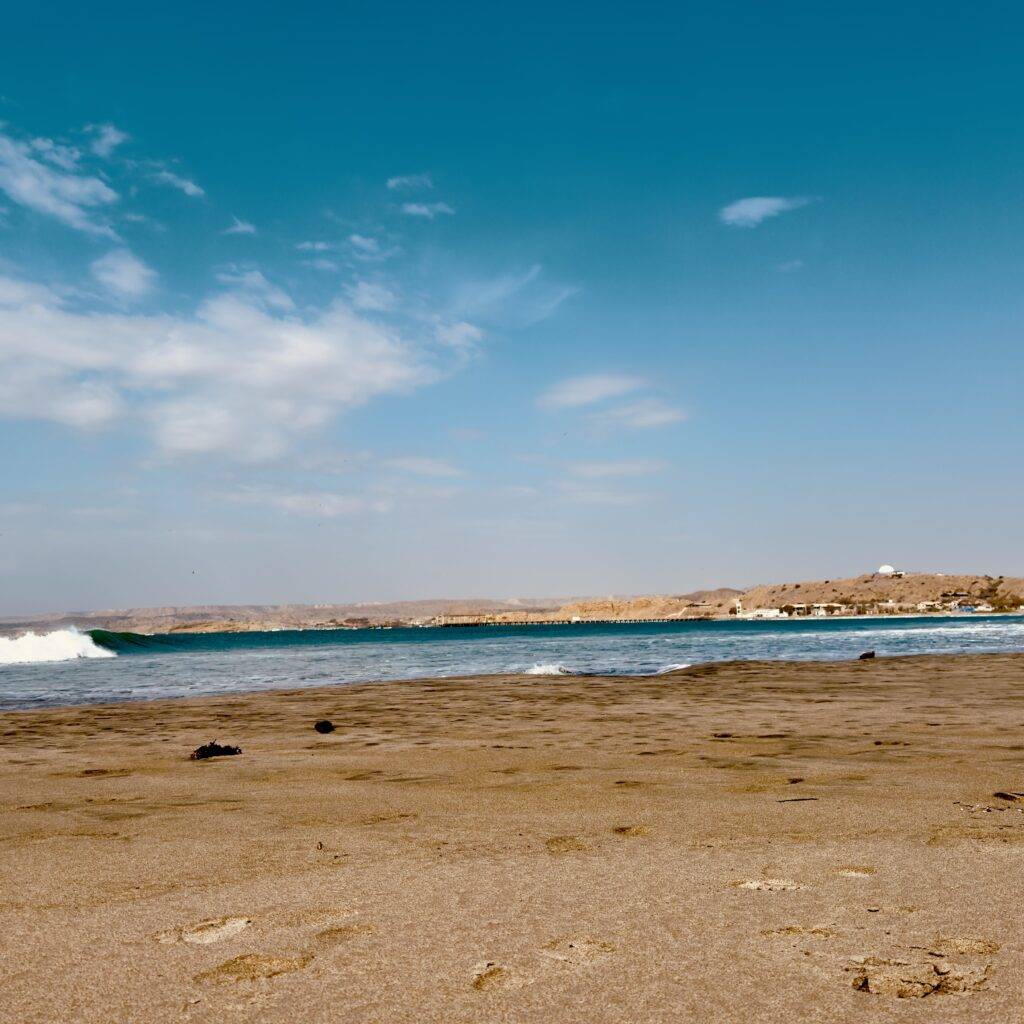
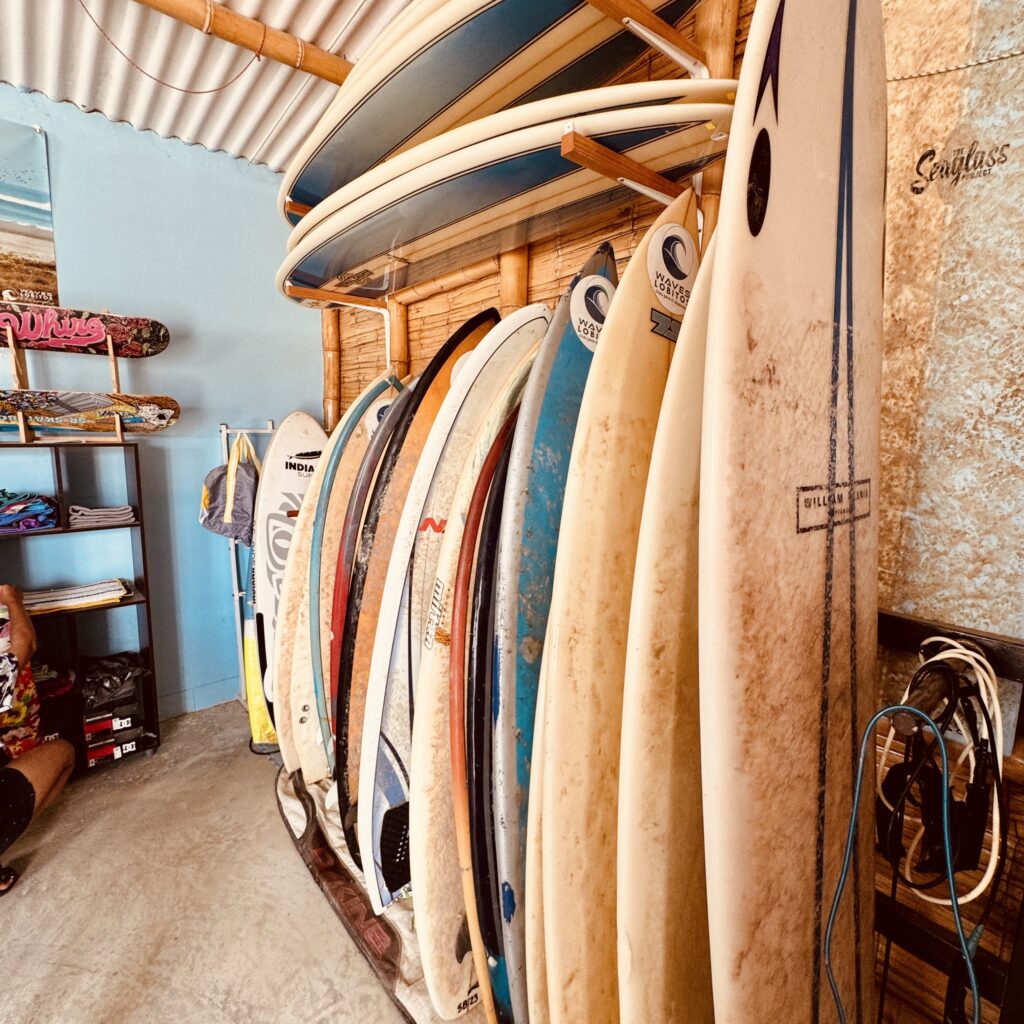
Things to Do in Lobitos (Beyond Surfing)
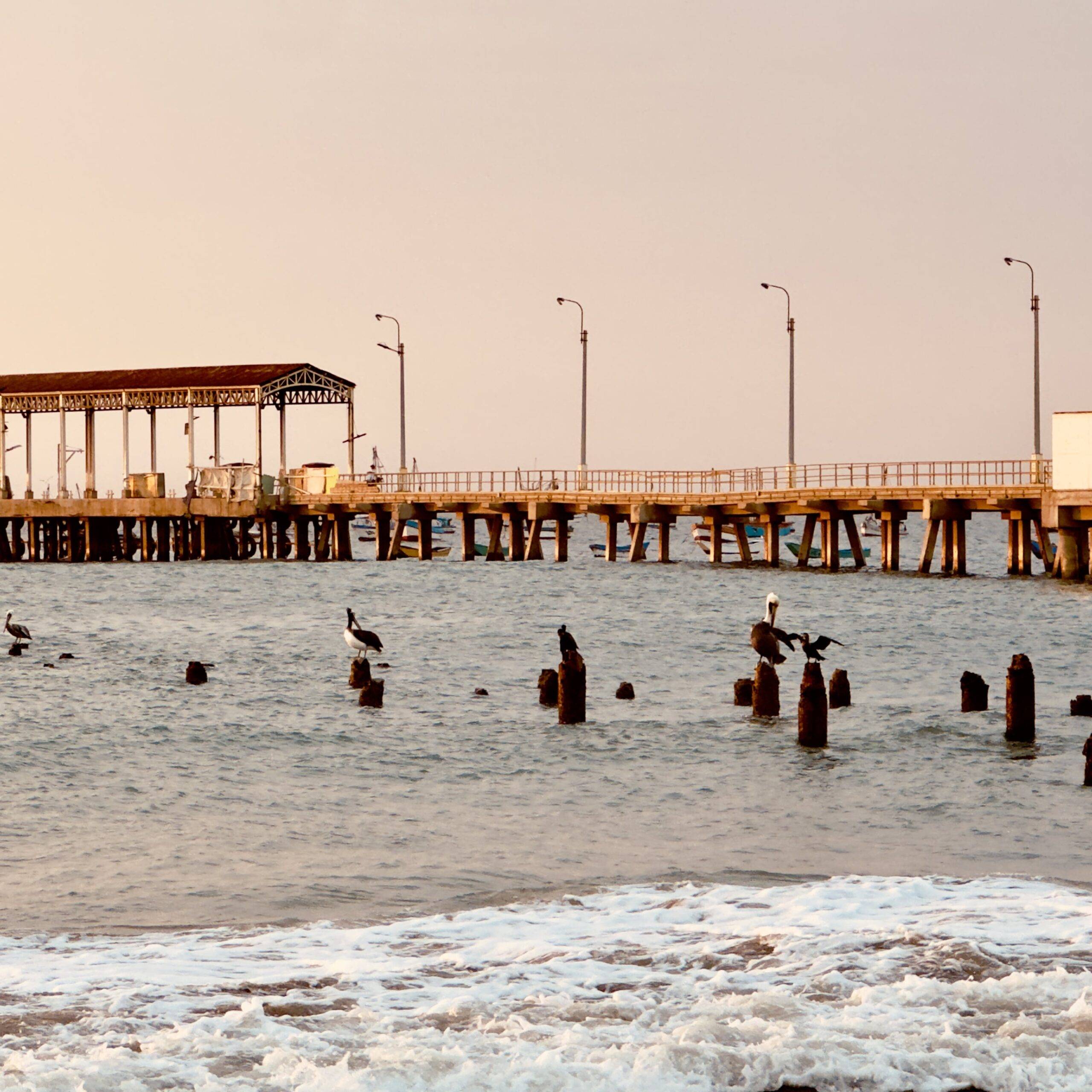
If you’re not surfing, don’t worry, Lobitos still finds ways to slow you down.
It’s the kind of place where “doing nothing” starts to feel like a plan.
Most days followed the same rhythm for us: early swims, sandcastle duty, long walks, and coffee breaks that turned into lazy afternoons.
But if you’re looking to explore, here’s what stood out:
1. Walk to the Pier
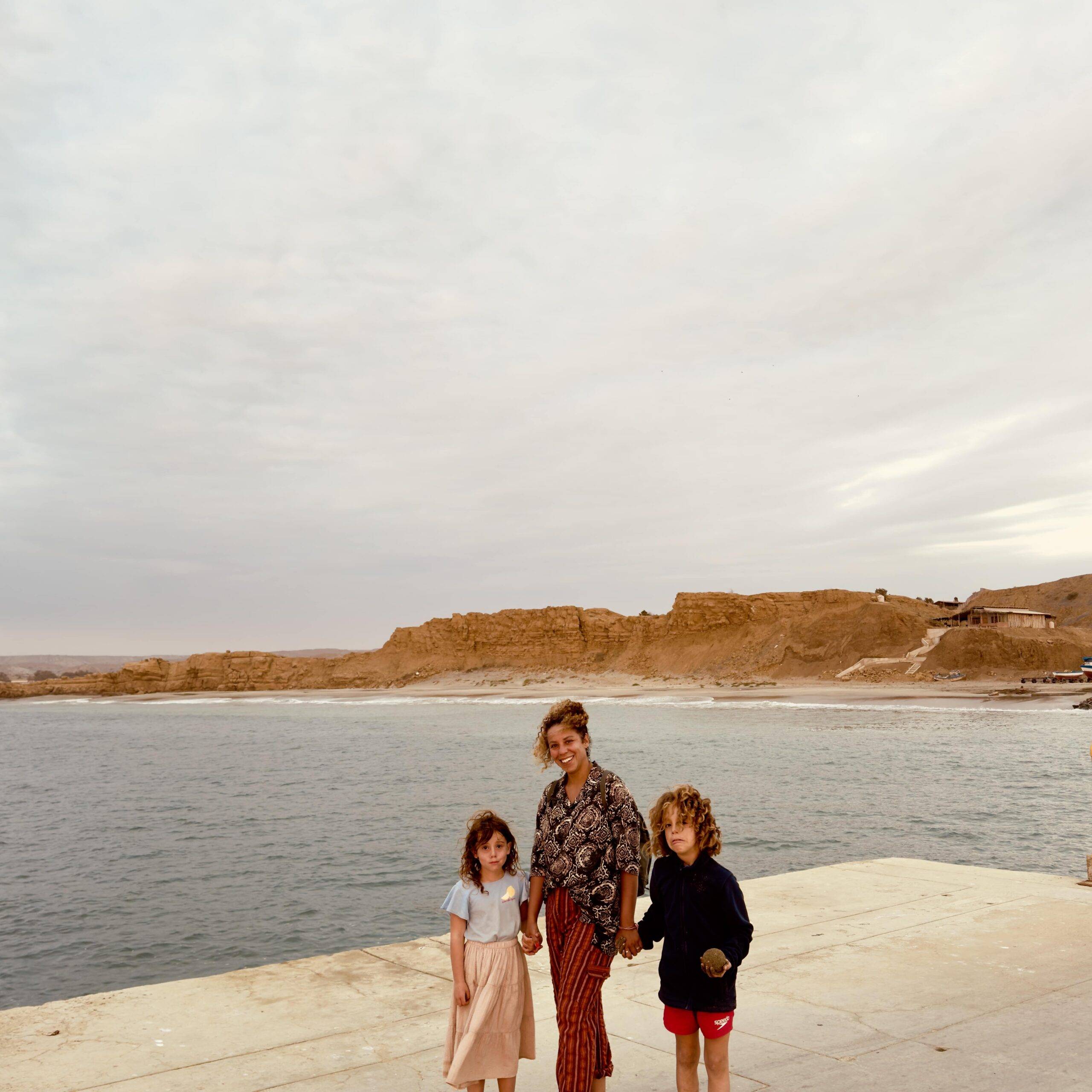
From Wayra Surf House, it’s about a 20-minute walk across the beach to the pier. The route itself is half the fun, tide pools, seashells, and old fishing boats make it a little adventure for kids (and an easy photography walk for adults).
2. The Park Above Town
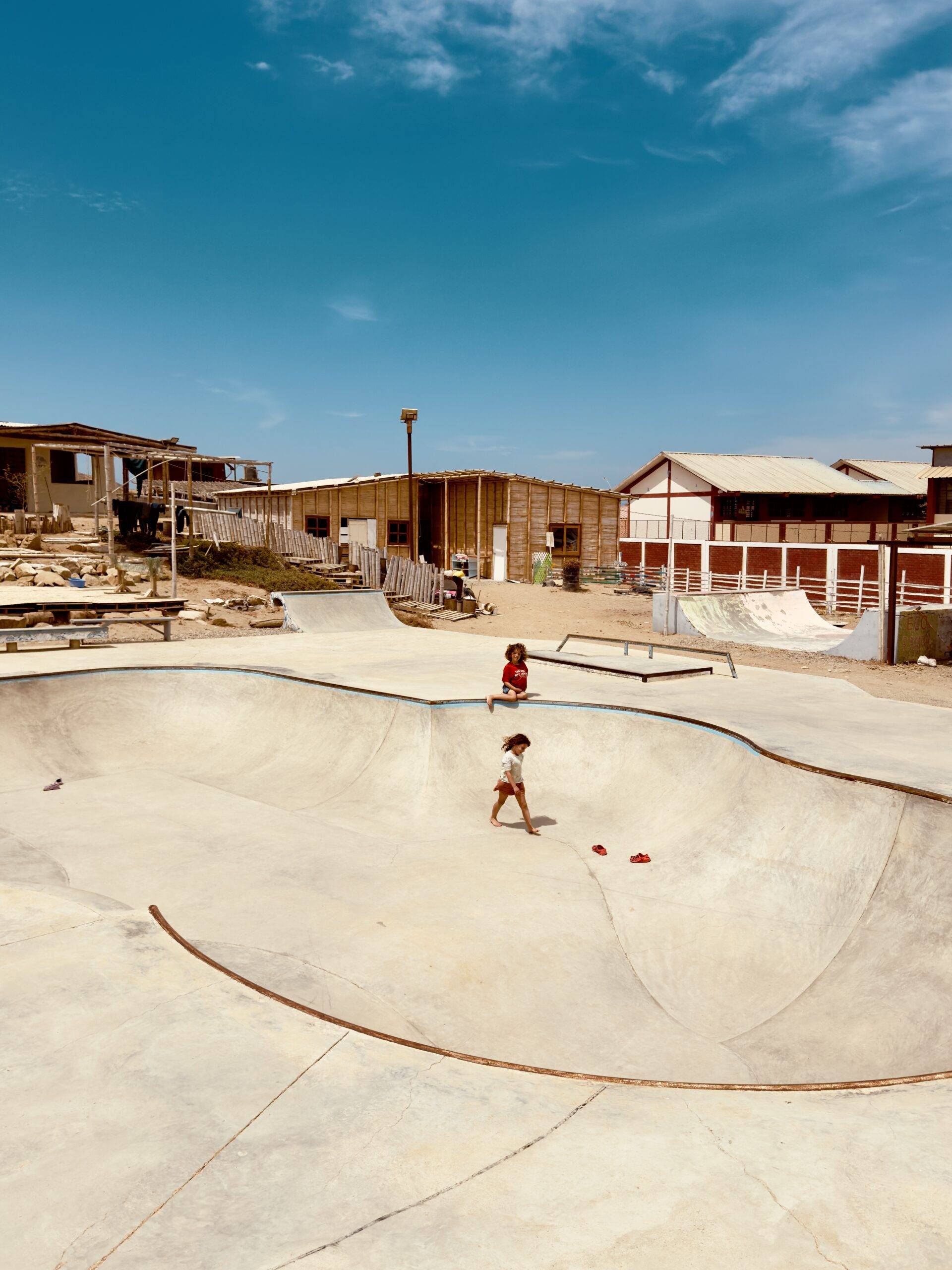
There’s a small park and also skate park perched just above where we stayed, overlooking the beach. Simple swings, great ocean views, and enough space for kids to run off some energy while you take in the sunset.
3. Explore the Rock Pools
At low tide, the rocks near the surf school reveal shallow pools full of tiny fish and crabs. Bring sandals or water shoes, they’re sharp in places, and you can easily spend an hour here exploring.
4. Sunset Watching
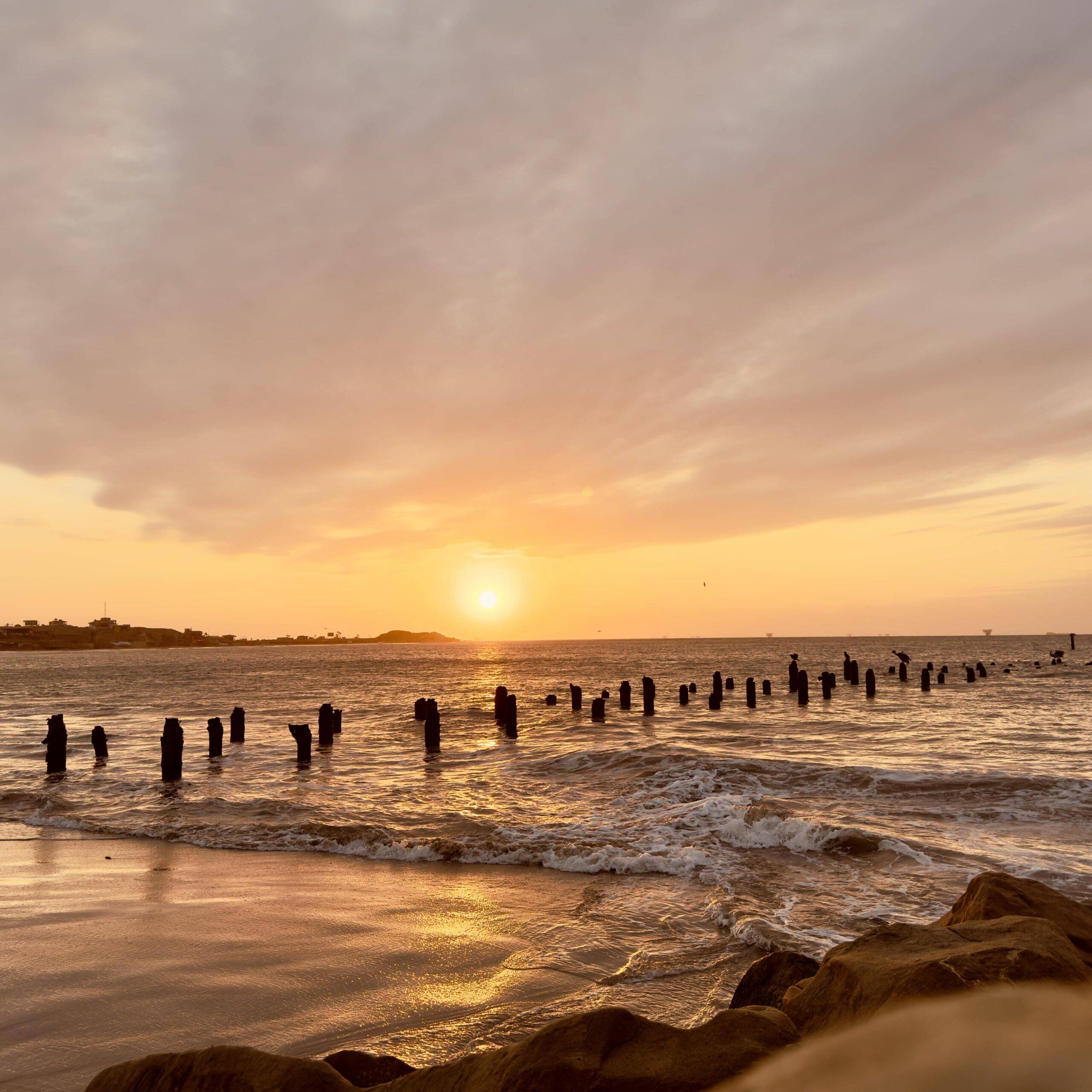
Every evening, the town seems to pause for it. The sky turns that pink-orange blend that makes everyone fall silent for a few minutes. The best spots are the rocks near the surf bar or the upper road near La Onza Café.
5. See the Tsunami Repairs
It’s impossible to miss, half-built walls, repaired facades, and empty shells of houses that still line parts of the coast. It’s a reminder that Lobitos is still rebuilding itself after the tsunami. There’s beauty in that resilience, and it gives the place an honest, lived-in feel.
It’s not a town packed with attractions, and that’s exactly why we loved it.
Lobitos invites you to slow down, look closer, and enjoy the quiet side of the coast — the one that hasn’t been polished for postcards yet.
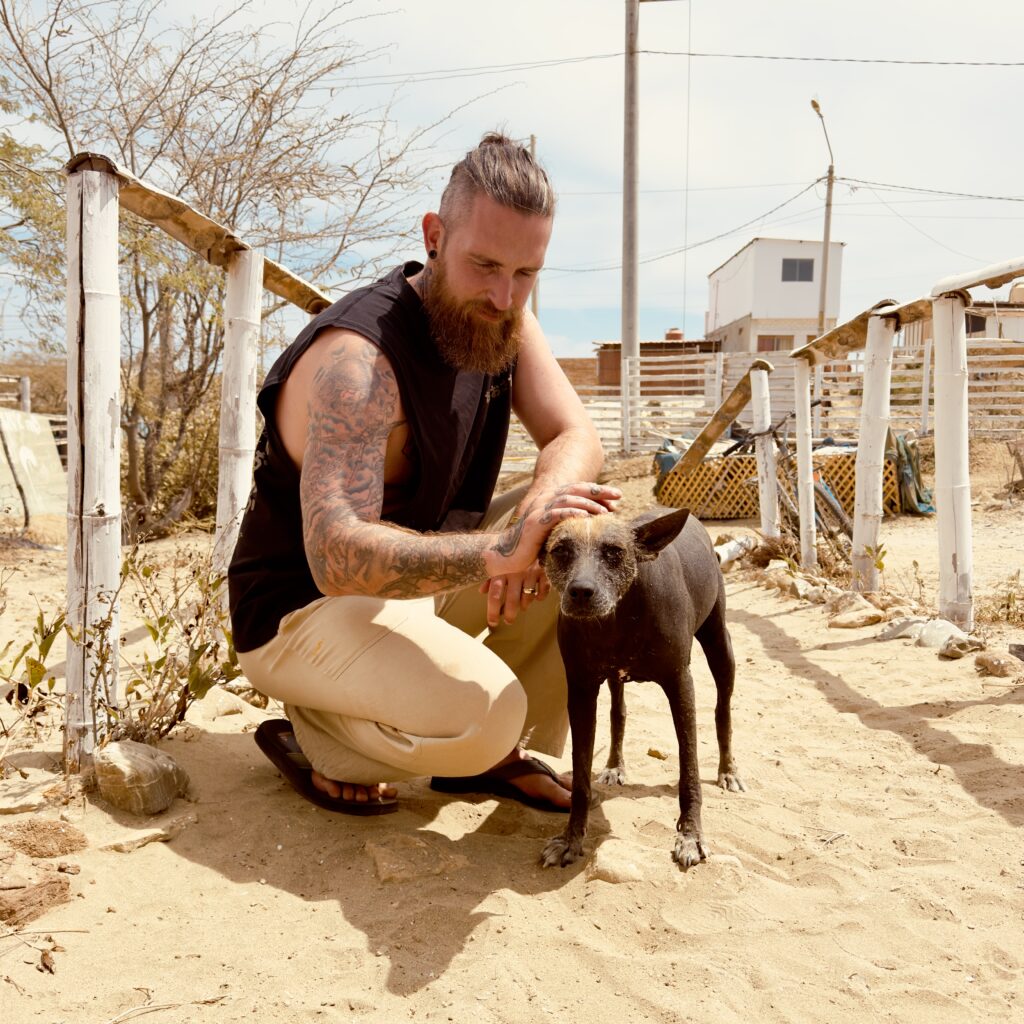

What to Know Before You Go (Costs, Tips & Reality Check)
Lobitos isn’t a place you just pass through, it’s somewhere you choose to slow down in.
And while it’s safe, beautiful, and peaceful, there are a few things worth knowing before you go.
Cost Of travelling Lobitos
- Taxi from Máncora: Around 120 soles (you can likely negotiate lower). It cost us 50 soles to get out and we had to arrange this through the hotel owner.
Accommodation: Budget to mid-range stays run 100–250 soles per night.
Meals: Expect to pay 20–30 soles per person in local eateries, and a bit more at expat cafés.
Surf Lessons: Around 200 soles for a family of four, including board rental.
Prices can feel high for Peru, especially as Lobitos is still small and remote and its up and coming in terms of being developed, but its supply and demand in action and American expats bumping up the prices.
Practical Tips For Visitin Lobitos
- Bring cash. There are no ATMs in town, and not everywhere accepts cards.
Stock up before you arrive. Snacks, fruit, and sunscreen cost almost double here.
Hot water only runs in the evenings. Most stays heat water from 5 p.m. onward.
Wi-Fi is patchy. Plan downloads in Máncora if you need to work or homeschool.
Security is tight but friendly. You’ll need to state your reason for visiting at the checkpoint, but the area feels very safe once inside.
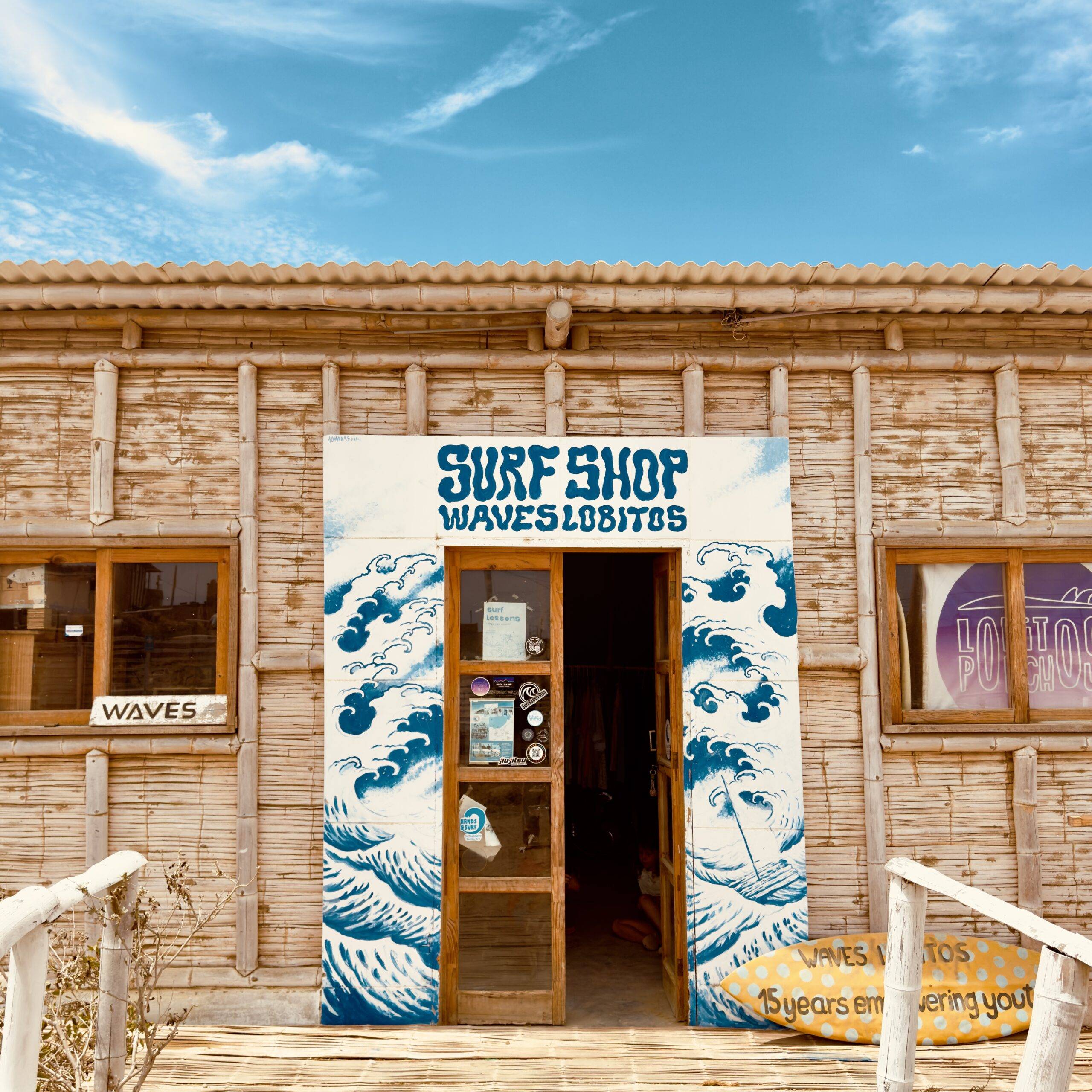
What to Expect
Lobitos is calm, a little dusty, and a world away from the busier Peruvian coast.
It’s a town still finding its rhythm, part surf haven, part rebuild, and completely laid-back.
You won’t find souvenir shops or nightlife, but you will find warm sunsets, easy waves, and the kind of quiet that’s hard to come by these days.
If you’re happy swapping convenience for calm, Lobitos is exactly the reset you didn’t know you needed.
Why Lobitos Was Worth It
Lobitos isn’t the kind of place that tries to impress you, and that’s what makes it unforgettable.
After the busier buzz of Máncora, it felt like stepping into a quieter rhythm. Days stretched out, the kids chased crabs in the tide pools, and the biggest decision was whether to surf before or after lunch. There wasn’t much to do, and that turned out to be the best part.
The town still has its rough edges, cracked half-finished buildings, limited shops, a few overpriced cafés, plenty of raggidy street dog, but somewhere between the steady surf and slow sunsets, we realised that’s the trade-off for stillness.
For families, Lobitos isn’t perfect, but it’s peaceful. It’s a place to let the sand pile up in your shoes and the to-do list fade away.
If you’re heading north through Peru, make time for this little surf town.
Even a few days here can remind you what travel is meant to feel like, simple, quiet, and real.

